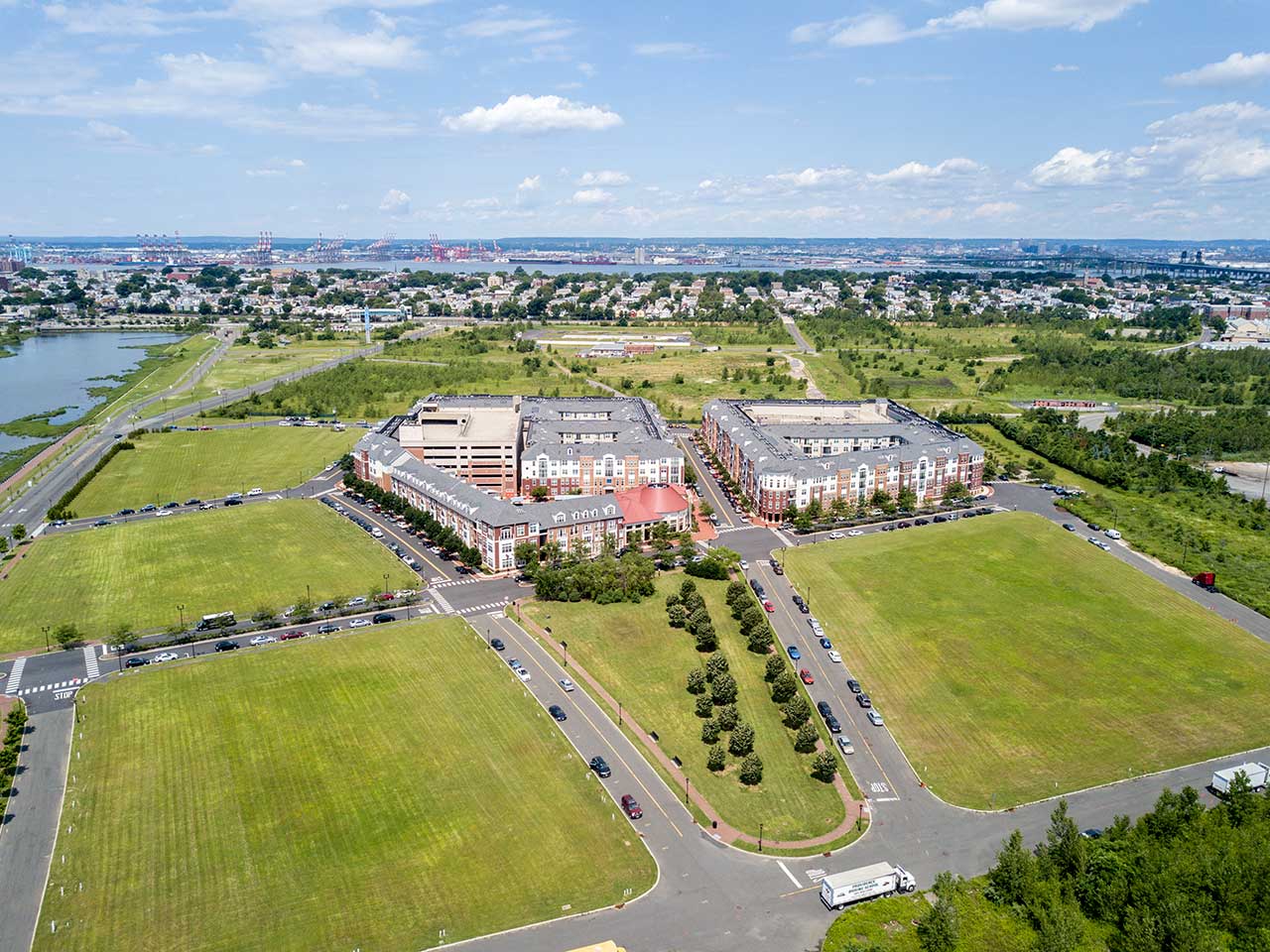
New details have been revealed about what could be coming to part of the former Military Ocean Terminal at Bayonne (MOTBY) site off of Route 440 and, should the latest proposal come to fruition, it would be one of the largest single development projects in Hudson County.
A legal notice issued earlier this month states that Mahalaxmi Bayonne Urban Renewal is looking to use 12 lots in the Harbor Station South Redevelopment Plan Area along Goldsborough Drive to construct a hotel, housing, retail space, and a park. The proposal calls for the “premium” hotel to include 218 rooms while the massive residential portion of the complex would include a whopping 4,500 units. Meanwhile, there would be 80,906 square feet of retail space on the premises.
Right now, the developer is looking for a “general development plan approval,” according to the notice. Mahalaxmi Bayonne Urban Renewal is apparently also seeking approval for an “interim parking scheme” that would temporarily allow for off-site parking should the project move forward.
Few other specifics have been revealed yet about the company’s plans. The notice mentioned that the proposal was expected to be heard by the Bayonne Planning Board during its May 14 meeting, but there was no mention of the matter in the meeting’s agenda.
The MOTBY site was previously used by the United States Army and the United States Navy, while the United States Coast Guard retains a presence in the area. Various parts of the premises have been, are in the process of being, or are slated to be redeveloped. In addition to the Harbor Pointe Apartments, which were completed years ago in a somewhat remote part of the site, the Costco Wholesale location at the Harbor View Marketplace development opened earlier this year and more retail space, industrial space, two buildings with a combined 651 residential units, another building with 97 units, and a Seastreak ferry terminal are on the way.
This part of Bayonne, along with other waterfront locations in Hudson County, is vulnerable to flooding and rising bay levels, but the risk has not stopped the increasing development in the region.


